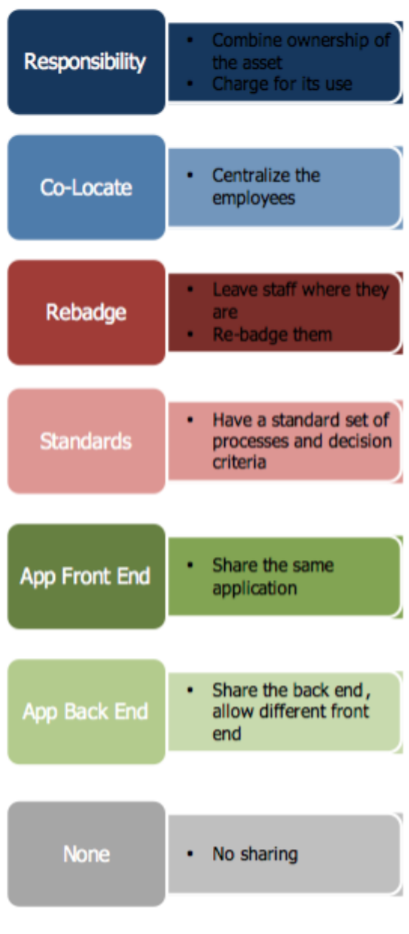Encyclopedias are generally not intended to help with definition. An encyclopedia is useful in that once you know what something means, you can find out what else is known about it.
Semantics is predicated on the idea of good definitions. However, most definitions are not very good. In this essay we’re going to explore why well-intentioned definitions miss the mark and propose an alternate way to construct definitions. We call this alternate way the “distinctionary.”
Dictionary Definitions
The dictionary creates definitions for words based on common and accepted usage. Generally, this usage is culled from reputable, published sources. Lexicographers comb through existing uses of a word and create definitions that describe what the word means in those contexts. Very often this will give you a reasonable understanding for many types of words. This is why dictionaries have become relatively popular and sometimes even bestsellers. However, it is not nearly enough. In the first place, there is not a great deal of visibility in attaching the definitions to their source. There’s a very casual relationship between the source of the definition and the definition itself
published sources. Lexicographers comb through existing uses of a word and create definitions that describe what the word means in those contexts. Very often this will give you a reasonable understanding for many types of words. This is why dictionaries have become relatively popular and sometimes even bestsellers. However, it is not nearly enough. In the first place, there is not a great deal of visibility in attaching the definitions to their source. There’s a very casual relationship between the source of the definition and the definition itself
Perhaps the larger problem is that the definition describes but it does not discern. In other words, if there are other terms or concepts that are close in meaning, this type of definition would not necessarily help you distinguish between them.
Thesauri Definitions
Another way to get at meaning is through a thesaurus. The trouble with a thesaurus is that it is a connected graph of similar concepts. This is helpful if you are overusing a particular word and would like to find a synonym, or if you want to search for a similar word with a slightly different concept. But again, it does very little good actually describing the differences between the similar terms.
WordNet
WordNet is an online searchable lexicon that in some ways is similar to a thesaurus. The interesting and important difference is that in WordNet there are six or seven relationship links between terms and each has a specific meaning. So whereas in a thesaurus the two major links between terms are the synonym and antonym links, in other words, similar to and not similar to, in WordNet there are links that define whether one term is a proper subtype of another term, whether one term is a part of another term, etc. This is very helpful, and it takes us a good way toward definitions that make a difference.
Taxonomies
A rigorous taxonomy is a hierarchical arrangement of terms where each subterm is a proper subtype of the parent term. A really good taxonomy includes rule in and rule out tests to help with the placement of items in the taxonomy. Unfortunately, few good taxonomies are available but they do form a good starting point for rigorous definitions.
Ontologies
An ontology, as Tom Gruber pointed out, is a specification of a conceptualization,. A good ontology will have not only the characteristics of a good taxonomy, with formal subtyping and rules for inclusion and exclusion, it will also include other more complex inference relationships. The ontology as well as the taxonomy also has the powerful notion of “committing to” the ontology. With a dictionary definition there’s no formal concept of the user committing to the meaning as defined by the source authority for the term. However, we do find this in taxonomies and ontologies.
The Distinctionary
The preceding lays out a landscape of gradually increasing rigor in the tools we use for defining and managing the terms and concepts we employ. We’re going to propose one more tool not nearly as comprehensive or rigorous as a formal taxonomy or ontology, but which we have found to be very useful in the day to day task of defining and using terms: the distinctionary.
The distinctionary is a glossary. It is distinct from other glossaries in that it is structured such that a term is first placed as a type of a broader term or concept and then a definition is applied which would distinguish this particular term or concept from its peers.
Eventually, each of the terms or concepts referred to in a distinctionary definition, i.e., “this term is a subtype of another one,” would also have to have their own entry in the distinctionary. But in the short term and for practical purposes we have to agree that there is some common acceptance of some of the terms we use.
A Few Examples
I looked up several definitions of the word “badger” In this case I was looking for the noun, the mammal. I remembered that a badger was an animal but I couldn’t remember what kind of animal, so I thought maybe the dictionary would help. Here is what I found:
Badger:
Merriam Webster:
1 a: any of various burrowing mammals (especially Taxidea taxus and Meles meles) that are related to the weasel and are widely distributed in the northern hemisphere
Encarta:
a medium-sized burrowing animal that is related to the weasel and has short legs, strong claws, and a thick coat. It usually has black and white stripes on the sides of its head.
Cambridge Advanced Learners Dictionary:
an animal with greyish brown fur, a black and white head and a pointed face, which lives underground and comes out to feed at night
American Herritage:
1. Any of several carnivorous burrowing mammals of the family Mustelidae, such as Meles meles of Eurasia or Taxidea taxus of North America, having short legs, long claws on the front feet, and a heavy grizzled coat.
Websters Dictionary (1828 Edition)
1. In law, a person who is licensed to buy corn in one place and sell it in another, without incurring the penalties of engrossing.
2. A quadruped of the genus Ursus, of a clumsy make, with short, thick legs, and long claws on the fore feet. It inhabits the north of Europe and Asia, burrows, is indolent and sleepy, feeds by night on vegetables, and is very fat. Its skin is used for pistol furniture; its flesh makes good bacon, and its hair is used for brushes to soften the shades in painting. The American badger is called the ground hog, and is sometimes white.
Encyclopedia Definitions
Columbia Encyclopedia
name for several related members of the weasel family. Most badgers are large, nocturnal, burrowing animals, with broad, heavy bodies, long snouts, large, sharp claws, and long, grizzled fur. The Old World badger, Meles meles, is found in Europe and in Asia N of the Himalayas; it is about 3 ft (90 cm) long, with a 4-in. (10-cm) tail, and weighs about 30 lb (13.6 kg). Its unusual coloring, light above and dark below, is unlike that of most mammals but is found in some other members of the family. The head is white, with a conspicuous black stripe on each side. European badgers live, often in groups, in large burrows called sets, which they usually dig in dry slopes in woods. They emerge at night to forage for food; their diet is mainly earthworms but also includes rodents, young rabbits, insects, and plant matter. The American badger, Taxidea taxus, is about 2 ft (60 cm) long, with a 5-in. (13-cm) tail and weighs 12 to 24 lb (5.4–10.8 kg); it is very short-legged, which gives its body a flattened appearance. The fur is yellowish gray and the face black, with a white stripe over the forehead and around each eye. It is found in open grasslands and deserts of W and central North America, from N Alberta to N Mexico. It feeds largely on rodents and carrion; an extremely swift burrower, it pursues ground squirrels and prairie dogs into their holes, and may construct its own living quarters 30 ft (9.1 m) below ground level. American badgers are solitary and mostly nocturnal; in the extreme north they sleep through the winter. Several kinds of badger are found in SE Asia; these are classified in a number of genera. Badgers are classified in the phylum Chordata, subphylum Vertebrata, class Mammalia, order Carnivora, family Mustelidae.
Wikipedia
is an animal of the typical genus Meles or of the Mustelidae, with a distinctive black and white striped face – see Badger (animal). [Badger Animal] Badger is the common name for any animal of three subfamilies, which belong to the family Mustelidae: the same mammal family as the ferrets, the weasels, the otters, and several other types of carnivore.
Firstly, I intentionally picked a very easy word. Specific nouns like this are among the easiest things to define. I could have picked “love” or “quantum mechanics” or a verb like “generate” if I wanted to make this hard. As a noun, the definition of this word would be greatly aided by (although not completed by) a picture.
Let’s look at what we got. First, all the definitions establish that a badger is an animal, or mammal. Anyone trying to find out what a badger was could easily be assumed to know what those two terms are. Most rely on Latin genus/species definitions, which is not terribly helpful. If you already know the precise definition of these things then you know what a badger is. Worse, many of them are imprecise in their references:“especially Taxidea taxus and Meles meles.”What is that supposed to mean?
Some of the more useful parts of these definitions are “burrowing” and “carnivorous.” However, these don’t actually distinguish badgers from, say, skunks, foxes or anteaters. “Weasle-like” is interesting, but we don’t know in what way they are like weasels. Indeed some of these definitions would have you think they were weasels.
Encyclopedias are generally not intended to help with definition. An encyclopedia is useful in that once you know what something means, you can find out what else is known about it. However, these encyclopedia entries are much better at defining “badger” than the dictionary definitions. (By the way, a lot of the encyclopedia information will make great “rule in/rule out” criteria.)
I had to include the 1828 definition, if only for its humor value. In the first place, the first definition is one that, less than 200 years later, is now virtually extinct. The rest of the definition seems to be in good form, but mostly wrong (“genus ursus” [bears] “feeds on vegetables,” “ground hog”) or irrelevant (“pistol furniture” and “brushes to soften the shades in painting”).
So what would the distinctionary entry look like for badger? I’m sad to say, even after reading all this I still don’t know what a badger is. Structurally the definition would look something like this:
A badger is a mammal. It is a four legged, burrowing carnivore. It is distinct from other burrowing carnivores in that [this is the part I still don’t know, but this part should distinguish it from close relatives (weasels and otters) as well as more distant burrowing carnivores, such as fox and skunk]. Its most distinguishing feature is two white stripes on the sides of its head.
The point of the distinctionary is to help us keep from getting complacent about our definitions. In the everyday world of glossaries and dictionaries, most definitions sound good, but when you look more closely you realize that they hide as much ignorance as they reveal. As you can see from my above attempt at a distinctionary entry for badger, it’s pretty hard to cover up ignorance.

 conference (OOPSLA in 1986): highly biased toward academic and research topics, at the same time shining a light on the issues that are likely to face the industry over the next decade. In this write up I’ll try to capture the tone of the conference, what seemed to be important and what some of the more interesting presentations were.
conference (OOPSLA in 1986): highly biased toward academic and research topics, at the same time shining a light on the issues that are likely to face the industry over the next decade. In this write up I’ll try to capture the tone of the conference, what seemed to be important and what some of the more interesting presentations were.
 lots of customer organizations experimenting and adopting semantic technologies – especially
lots of customer organizations experimenting and adopting semantic technologies – especially  published sources. Lexicographers comb through existing uses of a word and create definitions that describe what the word means in those contexts. Very often this will give you a reasonable understanding for many types of words. This is why dictionaries have become relatively popular and sometimes even bestsellers. However, it is not nearly enough. In the first place, there is not a great deal of visibility in attaching the definitions to their source. There’s a very casual relationship between the source of the definition and the definition itself
published sources. Lexicographers comb through existing uses of a word and create definitions that describe what the word means in those contexts. Very often this will give you a reasonable understanding for many types of words. This is why dictionaries have become relatively popular and sometimes even bestsellers. However, it is not nearly enough. In the first place, there is not a great deal of visibility in attaching the definitions to their source. There’s a very casual relationship between the source of the definition and the definition itself


